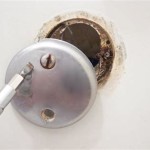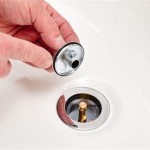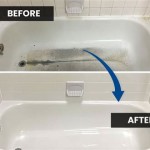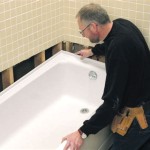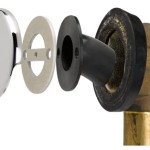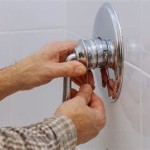Tent Bathtub Floor Materials: A Comprehensive Guide
The selection of appropriate flooring for a tent bathtub is a critical consideration, impacting the overall functionality, durability, and safety of the enclosure. A poorly chosen material can lead to water damage, mold growth, structural instability, and even safety hazards. This article delves into the various materials commonly utilized as flooring for tent bathtubs, examining their properties, advantages, disadvantages, and suitability for different applications.
The primary functions of tent bathtub flooring are multifaceted. It must provide a water-resistant or waterproof barrier to prevent leakage into the underlying ground. It must offer a stable and level surface for the bathtub to rest upon, ensuring even weight distribution and preventing tilting or collapse. Furthermore, the flooring should ideally be durable enough to withstand repeated use, resist punctures and tears, and be easy to clean and maintain. The ideal material also offers a degree of comfort and insulation, enhancing the bathing experience within the tent.
Key Point 1: Understanding Material Properties for Tent Bathtub Flooring
Before examining specific materials, it is crucial to understand the essential properties that contribute to a suitable tent bathtub floor. Waterproofing is paramount, meaning the material must be impervious to water penetration. Water resistance, while helpful, is not sufficient for prolonged exposure to standing water. Durability refers to the material's ability to withstand wear and tear, including abrasion, punctures, and UV degradation. Weight is a significant factor, especially for portable or temporary tent setups, as lighter materials are easier to transport and install. Ease of cleaning and maintenance is essential for hygiene and longevity, as the flooring will inevitably be exposed to water, soap, and potentially dirt and mildew. Finally, the material's thermal properties play a role in comfort, with insulating materials helping to retain heat and prevent a cold, uncomfortable surface.
Several material properties directly influence their performance as tent bathtub flooring. These properties include tensile strength, which measures the resistance to breaking under tension; tear strength, which indicates the resistance to tearing; puncture resistance, the ability to withstand sharp objects; and water permeability, the rate at which water passes through the material. Understanding these properties helps in evaluating different materials and selecting the most suitable option for a specific application.
The material's chemical resistance is also important. Tent bathtub floors may come into contact with soaps, shampoos, and cleaning agents, and the material should be able to withstand these chemicals without degradation. The material’s resistance to mold and mildew growth is also crucial, particularly in humid environments.
Key Point 2: Examining Common Tent Bathtub Floor Materials
Several materials are commonly used as flooring for tent bathtubs, each with its own set of characteristics. These include polyvinyl chloride (PVC), polyethylene (PE), rubber, and specialized composite materials. Each offers different levels of performance in terms of waterproofing, durability, weight, and comfort.
Polyvinyl Chloride (PVC): PVC is a widely used synthetic plastic polymer known for its excellent waterproofing properties, durability, and affordability. PVC flooring is typically available in rolls or tiles and can be easily cut and installed. It offers good resistance to chemicals and abrasion, making it suitable for frequent use. However, PVC can be relatively heavy compared to other options and may release volatile organic compounds (VOCs), particularly when new. Higher-quality PVC flooring options are available with reduced VOC emissions.
Polyethylene (PE): Polyethylene is another common plastic polymer, often used in the form of tarps or ground sheets. PE is lightweight, flexible, and relatively inexpensive. While it offers good water resistance, it is generally less durable than PVC and more prone to tearing or punctures. PE is a suitable option for temporary or lightweight tent bathtub setups, where portability is a primary concern. However, it may not be the best choice for long-term or heavy-duty use.
Rubber: Rubber flooring offers excellent durability, water resistance, and slip resistance. It is available in various forms, including rolls, tiles, and mats. Rubber is generally heavier and more expensive than PVC or PE, but its superior durability and comfort make it a suitable option for more permanent or high-end tent bathtub setups. Rubber flooring also provides good insulation, helping to retain heat and prevent a cold floor surface.
Composite Materials: Specialized composite materials, such as those made from recycled plastics or reinforced fabrics, are increasingly being used as tent bathtub flooring. These materials often combine the benefits of different polymers, offering a balance of waterproofing, durability, and weight. Composite materials can be more expensive than traditional options but may offer superior performance and environmental benefits. They often feature enhanced tear resistance and UV stability, making them suitable for outdoor use.
The choice of material often depends on the specific needs and budget of the user. Considerations include the frequency of use, the size and weight of the bathtub, the environmental conditions, and the desired level of durability and comfort.
Key Point 3: Installation and Maintenance Considerations
Proper installation and maintenance are crucial for maximizing the lifespan and performance of tent bathtub flooring. Incorrect installation can compromise the waterproofing and stability of the floor, leading to leaks, mold growth, and structural damage. Regular maintenance is essential for keeping the flooring clean, preventing mildew, and addressing any minor damage before it escalates.
Before installing the flooring, it is essential to prepare the ground surface properly. This involves leveling the ground, removing any sharp objects or debris, and ensuring proper drainage. A layer of sand or gravel can be used to create a stable and level base. For PVC or rubber flooring, it is important to use appropriate adhesives or fasteners to secure the material to the ground or the tent frame. Overlapping seams should be properly sealed to prevent water penetration.
For PE tarps or ground sheets, it is important to secure the edges properly to prevent them from shifting or blowing away. This can be done using tent stakes, weights, or other suitable anchoring methods. Regular inspection of the flooring is essential for identifying any tears, punctures, or damage. Minor repairs can be made using patching kits or waterproof tape. More extensive damage may require replacing the entire flooring.
Cleaning the tent bathtub flooring regularly is crucial for preventing mold and mildew growth. This can be done using a mild soap and water solution. Avoid using harsh chemicals or abrasive cleaners, which can damage the flooring material. Allow the flooring to dry completely after cleaning to prevent moisture buildup. Proper ventilation within the tent can also help to reduce humidity and prevent mildew growth.
The longevity of tent bathtub flooring depends not only on the material selected but also on the care and maintenance provided. By following proper installation procedures and implementing a regular cleaning and maintenance schedule, it is possible to extend the lifespan of the flooring and ensure a safe and enjoyable bathing experience within the tent.

Tent Bathtub Floor Onetigris Camping

Ultralight Bathtub Floor The Hiker
What Exactly Is A Tent Bathtub

Bathtub Groundsheet

Tent Bathtub Floor Onetigris Camping

Ultralight Bathtub Floor The Hiker

Parts Of A Tent And What They Are Used For

Multifunction Camping Tent Footprint Bathtub Floor Cloth Waterproof Ground Sheet
What Exactly Is A Tent Bathtub

Tub Floor Yama Mountain Gear

